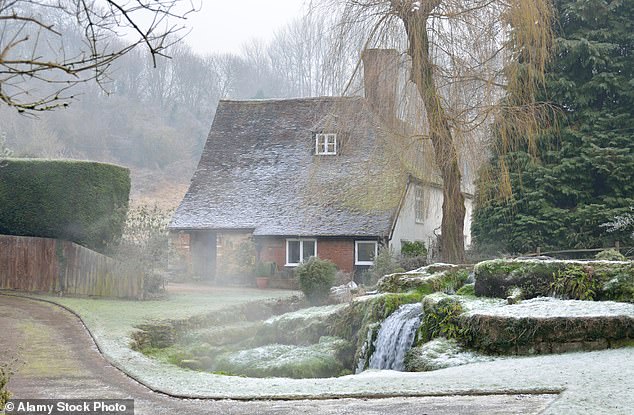As we approach winter, the garden becomes bare. The leaves have fallen from the trees and the herbaceous perennials have died on the ground. We can see the bones of the garden again, providing a blank canvas on which to make changes.
Here in the northern hemisphere we are lacking vitamin D at this time of year.
So put on a coat and go out into the garden to enjoy what little daylight there is. You will feel much better for it.
If your yard is soggy or slippery, consider adding a new path or steps. These don’t have to be expensive. Follow the wish lines you already use to move around the garden and mark the edges.
Remove the top layer of grass and dig a trench on each side to insert an edging material such as bricks, stones, wood or Corten steel.
The easiest way is wood chips placed on a weed-resistant membrane. If you want to use gravel or try laying bricks, it is a good idea to add a layer of crushed stone underneath. The steps are even easier and can be dug directly into the grass.
Another good project is to create a seating area where you can escape with a cup of something hot. My own back garden is largely in the shade from November to March, but the sun comes all the way through, so this is where I set up a seat.
You can use anything weatherproof, from a garden bench to a couple of cast iron chairs, with a bistro table between them.
Blank canvas: it’s easier to see what needs to change in the quieter season
PLANT AGAIN
This is an excellent season to make a new border or renovate an existing one. If you are starting from scratch, decide your location depending on what you want to plant there.
For herbaceous plants, a location that receives sun for several hours a day in spring and summer is best. A shady corner can be used as a forest edge.
Mark your flower bed and remove the grass with a cutter, placing it in the compost pile.
If you are planting directly into the soil, dig over the bed with a shovel before adding organic matter.
If you are making a raised bed, you can simply add soil on top of the grass.
When overhauling an existing border, leave large shrubs and work the soil around them. Smaller plants can be lifted and set aside until you are ready to replant them.
Weed the bed well and add compost.
Spend the long dark nights browsing seed and plant catalogs for inspiration, but save planting until spring.
LIGHT UP THE DAYS
Try to have a balance of about one-third evergreens for structure, then think about layers and shapes. Combine tall grasses with ground cover, as well as showy plants. Plan to have something in bloom for each month of the year.
Can you add a focal point to draw attention to the garden? It could be a mirror hanging on a fence that reflects light or the shed, painted in a vibrant new shade.
And think about lighting to brighten dark nights – a simple string of decorative lights strung from a bush can provide a magical boost in the dead of winter.

